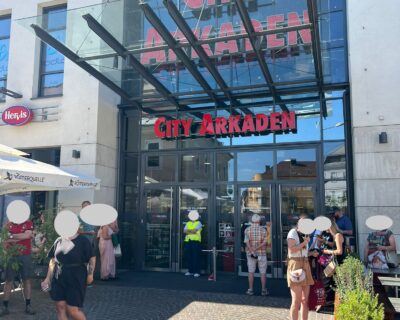The fire protection concept - different depending on requirements

A fire protection concept is at the heart of every construction project in terms of ensuring fire safety. It systematically describes how the safety of people, property and the environment is guaranteed in the event of a fire. It takes into account a wide range of influencing factors such as building use, structural conditions, legal requirements and individual user requirements. In Austria, the OIB guidelines (Austrian Institute for Building Technology) in particular form the basis for the creation of such concepts. However, there are also different types of fire protection concepts, each of which offers different requirements and options:
- Compliance with the OIB guidelines
- Engineering fire protection concept
- Economical fire protection concept
Compliance with the OIB guidelines
The fire protection concept according to the OIB guidelines is the classic and most common form of fire protection concept. The OIB guidelines provide clear and detailed specifications regarding structural, plant engineering and organizational measures that must be complied with for every construction project. The aim of this approach is to ensure a high level of safety through standardized specifications.
The OIB guidelines include, among other things:
- Fire protection requirements for walls, ceilings and roofs
- Requirements for escape routes, escape routes and their marking
- Requirements for fire compartments, fire barriers and smoke compartments
- Specifications for fire protection equipment such as fire alarm systems, sprinkler systems, smoke extraction systems
- Specifications for the use and storage of flammable materials
The concept serves to clearly and comprehensibly demonstrate that all requirements of the OIB guidelines have been fully complied with. This is usually done by means of detailed plan drawings, tables and written descriptions. The main advantage of this concept is its clear structure and unambiguous specifications, which makes it easier for the authorities to check and approve. The disadvantage, however, is that there is little scope for individual solutions due to the strict specifications. Particularly in the case of complex or innovative construction projects, these standard specifications may not always be optimally applicable.
Engineering fire protection concept
The engineering fire protection concept takes a much more flexible and individual approach. Here, fire safety is not verified solely on the basis of normative specifications, but by means of specific engineering methods and calculations. This is based on recognized calculation models and simulations that can be used to precisely verify the actual safety of the building. This approach opens up more scope for design, especially for larger or particularly demanding projects.
Typical procedures of an engineering fire protection concept include, among others:
- Fire simulations (e.g. using CFD simulations such as FDS and PyroSim)
- Calculations of smoke propagation and dissipation
- Evacuation calculations (e.g. with Pathfinder)
- Calculation of the load-bearing capacity of components under fire exposure
- Heat transfer calculations to evaluate the temperature development in components
An engineering-based fire protection concept allows the measures to be adapted precisely to the actual risk situation of the building. This means that a higher level of safety can often be achieved than through purely normative specifications. In addition, solutions can be developed that are economically more efficient and better tailored to the specific needs of the users. However, such a concept requires in-depth specialist knowledge, extensive experience in simulation techniques and a high degree of coordination with authorities and inspection bodies.
Economical fire protection concept
The economical fire protection concept combines the advantages of the normative and engineering approaches and thus represents a tailor-made solution for many building projects. The aim of this concept is to combine both compliance with the OIB guidelines and the possibilities of engineered fire protection in such a way that an optimum balance is achieved between safety, economy and user-friendliness.
First, all relevant requirements of the OIB guidelines are recorded and their possible implementation checked. Areas are then identified in which deviations from the normative specifications could be useful or necessary. This is precisely where the engineering approach comes into play. Targeted calculations and simulations are used to prove that the required safety level is at least met, and often even exceeded, despite the deviations.
Areas of application for the economical fire protection concept include
- Special buildings such as high-rise buildings, shopping centers or complex industrial plants
- Renovations and conversions where the existing building stock must be taken into account
- Projects where special user requirements demand individual planning
The main advantage of an economical fire protection concept is that the fire protection measures can be precisely tailored to the respective building project. This often results in considerable cost savings compared to purely normative implementation, as unnecessarily oversized measures can be avoided.
To summarize
Each of the three types of fire protection concepts has its own special advantages and is suitable for different areas of application. While the classic concept according to OIB guidelines offers clear standards and simple traceability, the engineering fire protection concept opens up possibilities for individual optimization and greater efficiency. Finally, the economic fire protection concept combines both approaches optimally and enables tailor-made solutions that combine economic advantages with a high level of safety.
In practice, the choice of the right fire protection concept must always be weighed up individually. The specific requirements of the building project, the desired objectives in terms of safety and cost-effectiveness as well as the respective framework conditions on site are decisive.




